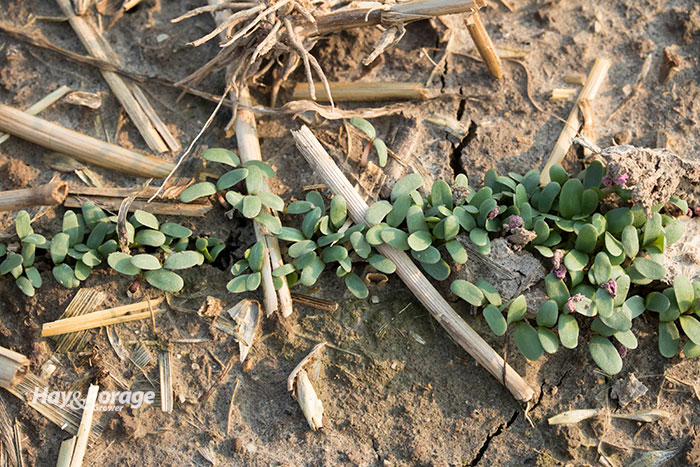
There are about 200,000 alfalfa seeds in a pound. That’s also the number of opinions there are for successfully establishing alfalfa or grasses. Among the many variables that constitute these opinions are seedbed preparation, seeding rate, seeding method, seeding equipment, and seeding depth.
Regardless of where your opinion lies, two principles will always be true:
1. A failed or poor stand is costly.
2. Proper soil fertility and pH, seeding depth, and seed-to-soil contact are needed for success.
Matt Digman said that forage seeding technologies and principles have been with us for a long time. To prove this point, the University of Wisconsin agricultural engineer cited the biblical account of the parable of the sower to begin his presentation at the Midwest Forage Association’s Virtual Symposium.
“There have been far more advancements in planting corn than seeding alfalfa,” Digman said. “Part of the problem is the size of alfalfa seed and how such small seeds can actually be metered and placed at the proper depth like we see with a modern corn planter.”
We know that seeding depth is a critical factor, but what is considered optimum?
Most people would probably agree that 1/4 to 1/2 inch is appropriate for maximum emergence. Digman pointed out that this is true but soil type comes into play. “A coarser textured soil is going to be more forgiving than a loam or clay soil if you go too deep,” he said. “Seeding deeper than 1/2 inch in a fine-textured soil is going to severely limit emergence in most cases.”
To emphasize the importance of seeding depth, Digman showed this video from the University of Kentucky.
How do you rate?
Discussions on seeding rate always elicit lively discussion. In a poll taken during the presentation, the most common alfalfa seeding rate for those in the audience was 16 to 18 pounds per acre.
The volumetric seed metering mechanism on most drills originates from a system developed by English agriculturist Jethro Tull (not the rock band) during the industrial revolution. The metering system, which uses fluted wheels, is linked to the drill’s ground speed. This makes drill calibration critical if the desired seeding rate is to be obtained for any given field condition and seed type.
Digman openly admitted that drill calibration was not an employed practice as he was growing up on his family’s dairy farm. However, that doesn’t mean he isn’t currently a strong proponent.
“Calibration is something that can easily be done before fields are ready to plant, and there are a lot of good articles and videos that explain the process,” Digman said.
The optimum seeding rate for an individual field will vary on soil conditions and seedbed preparations. A lower seeding rate might be used in a fully prepared seedbed, but this also comes with additional tillage costs and a higher likelihood for soil erosion. In a low or no-till situation with more residue, seeding rates might need to be slightly increased.
Seed . . . meet soil
Digman explained that small seeds have a limited energy reserve from which to draw upon for germination and emergence. For this reserve to be fully utilized before photosynthesis has to take over and sustain the plant, both seeding depth and seed-to-soil contact play an important role.
“When using a drill, following with a corrugated roller to firm the seed into the soil will help ensure good seed-to-soil contact and imbibition of water into the seed,” Digman said. “Achieving uniform depth with a drill is often difficult.”
Digman sees more farmers seeding into high-residue situations using a floater chassis followed by a roller. “These units still need to be calibrated,” Digman said. “In many cases, the seed is metered and pushed by air through the booms.” Where the seed is spread onto a high-residue field, he recommended bumping up seeding rates by about 20%.

